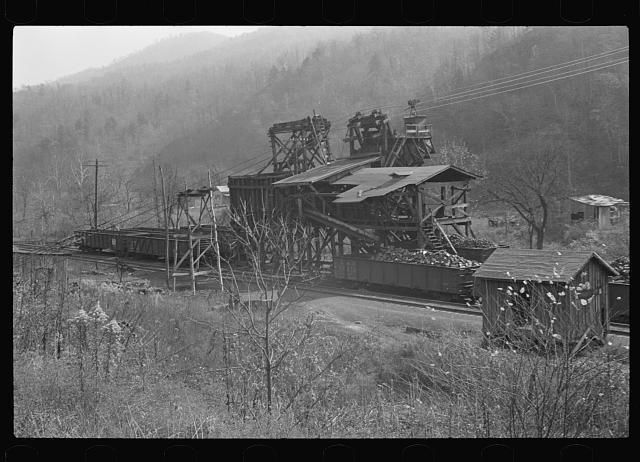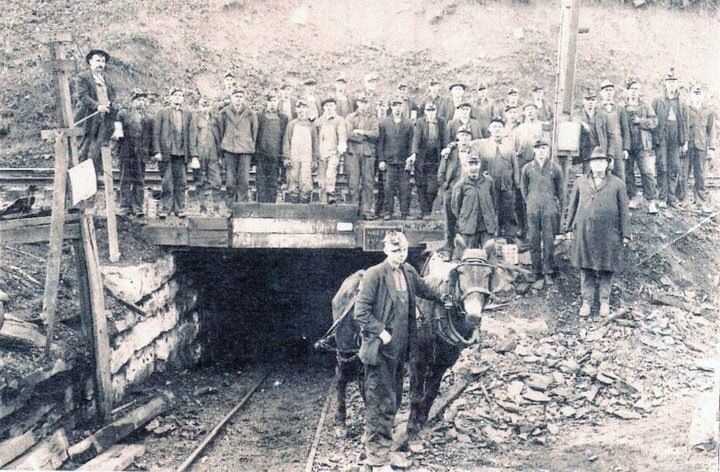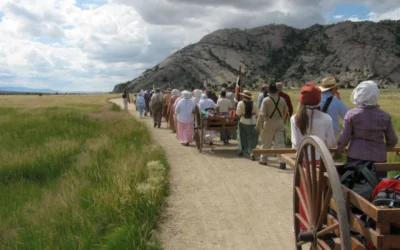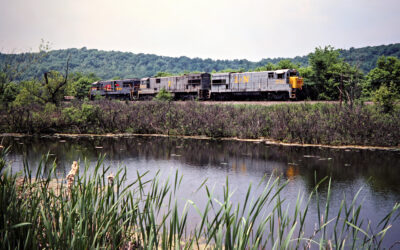Harlan County sits in the sweet spot of coal mining in southeastern Kentucky. Even pop culture cannot ignore its impact with such television shows as Justified. It is an area of Kentucky that you only go to if you are intentionally going to the county. The county was once part of Knox County, only becoming official in 1819. So, for an area that was so secluded, how did people get there?
Did Your Ancestor Come to Mine Coal?
When you are told the story of southeastern Kentucky, it usually begins and ends with coal mining. It is almost as if life did not exist before the mines were open. Many aspects of daily living in this area revolve around coal mining and the status of operations. For someone looking into their family history, it is important to recognize the impact that coal mining had, and still has, in this region. The real question that genealogists must start with is when did their family become a part of the fabric of the coal mining industry?

Loading coal, Jenkins, Kentucky Oct 1935 [Source: Library of Congress Prints and Photographs Division]
This coal mining family would have the opposite effect on the Harlan County population years later when the Hillbilly Highway became popular. This “highway” would take former coal miners away from southeastern Kentucky and into the manufacturing areas of the country. An influx of former coal miners poured into states such as Ohio and Michigan. Once again, these families were looking for a better, and safer, way of life. Some would stay in their new-found homes, while others would make the trek once again back to Harlan County, Kentucky.
Migrating From Tennessee to Kentucky
My great-grandfather, William Howard Taft Price, was born in LaFollette, Campbell County, Tennessee. LaFollette is located about 76-miles southwest of Harlan County. Born in 1910, Taft (as he was called) grew up in a family of coal miners.
Even though there were mines in LaFollette, the real money was to be paid in Harlan County.
Coal operators were offering more money and better living conditions to those who were willing to move. After watching other family members take advantage of what was being offered in Harlan County, Taft’s family packed up what they could carry and made the move to Kentucky.
The trek from LaFollette to Harlan was not an easy one. What would take you and I a couple of hours now, took the Price family a few days. Taft’s father, Abe, did not own any type of transportation. To get to Kentucky, Taft, along with his parents, older sister, and two younger brothers, had to get a bit creative.
The family walked most of the way along the railroad tracks. When they would become tired, they illegally hopped onto the train and rode for a bit. At night, they would find abandoned houses where they could get some sleep. The promise of a better life kept them going.
Ancestor Used Creative Paths to Kentucky
After arriving in Harlan County, Abe went to work in the mines right away. Since he had already been working in the mines in Tennessee, he immediately found his place in Kentucky. At this point, Taft was about 11 years old (although he thought he was 13). He also began working in the mines. It was not unusual for all the men in a family to be involved in the coal industry. While the promises that the coal operators were handing out in Tennessee did not come to pass, there was one bright spot: extended families were being reunited.
Many families moved to Harlan County under the false promises of the coal companies. The mine operators promised those who came to work better wages and a safer work environment. The wages never improved. Also, with the push to get the coal out of the mine quicker, corners were cut and safety actually declined. For the coal operators, it was all about profit and not about the miners well-being.
However, the influx of people helped Harlan County to grow and become an important supplier for coal to areas such as New York and Philadelphia. The popularity of coal made its way all the way to southern and eastern Europe, especially in the 1930s. Like those coming from Tennessee, the promise of a better life pulled these immigrant families to Harlan County.
Our Ancestors Occupations Explain Their Lives
As a genealogist, it is important to look at census records in depth. Look at what types of jobs your family had, even those who came from across the pond. Did they work in some type of mining industry? If so, dig into the areas of the country that were hot pockets for miners. Also, look at where their extended family lived. Communities, especially in Appalachia, were built by extended families. Coal miners were their own type of family. This fact would hold true even years later when the Hillbilly Highway became popular, and those coal miners needed new jobs.
Resources
The Kentucky Coal Education website lists the coal camps and contains other useful references to provide background information.




